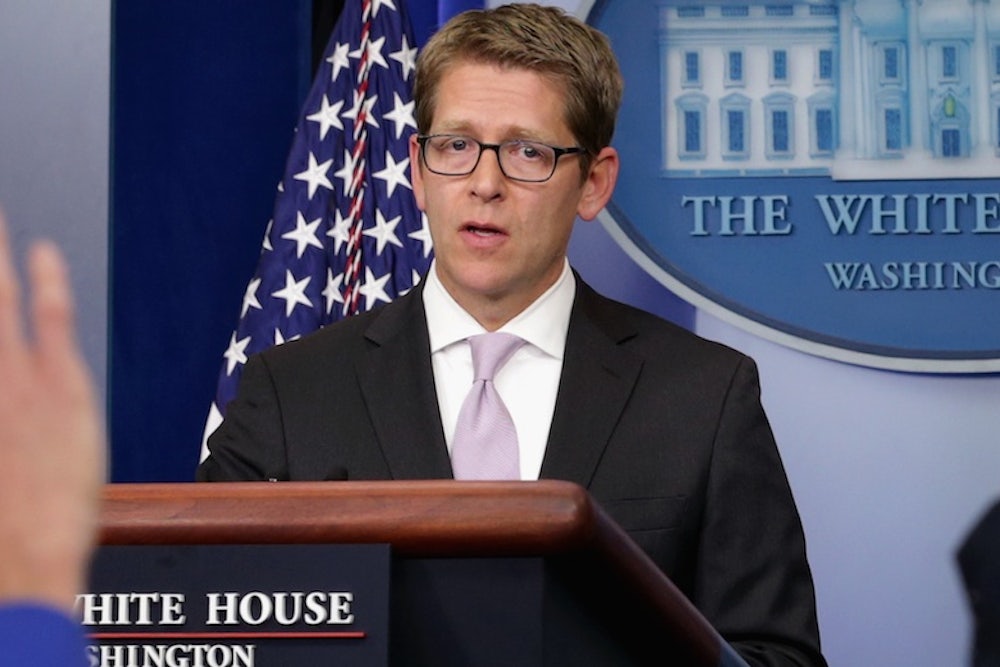The Obamacare online saga may be reaching the phase where media and political hysteria is out of proportion to the actual problem. A case in point is the controversy over enrollment numbers.
The Obama administration has not released figures for how many people have actually selected a plan and agreed to pay premiums. Officials have said they would do so after one month, since that’s the way government normally releases figures. But the administration has released other information, like the number of visitors to the site. Meanwhile, several states running their own sites have released their enrollment information. Reporters want to know why the federal government can’t or won’t do the same.
It’s a reasonable question. And I suspect the numbers will come out soon enough, if not because the administration announces them then because somebody leaks them. When they do, enrollment in Obamacare private plans will probably look pretty dismal. Most people will assume that's primarily because of website problems at healthcare.gov. They will be wrong.
The main reason for low enrollment will be that people don't sign up for health insurance programs right away. They wait until the last minute. This is true of public insurance and this is true of private insurance. And while you've heard people (including me) say this for months, this is one of those cases when numbers tell the story better than words. And there are some numbers very few people have seen.
The numbers are from Massachusetts, the state whose health reforms became the template for the Affordable Care Act’s coverage expansion. The place to look is within what’s known as the “Commonwealth Care” program, which is where people getting private insurance subsidies shopped for plans—in other words, an analogous structure to the new federally run exchanges.
Raw statistics on enrollment are already in circulation. They show that the majority people didn’t sign up right away and a the biggest rush came at the end, when people realized they would owe a financial penalty for going without insurance. But even the raw numbers don’t fully capture the timing of enrollment, because they include large numbers of people whom Massachusetts officials automatically transferred from a “free care” pool the state had operated previously. If you want to get a real sense of enrollment patterns among people choosing to shop and buy plans, it’s better to exclude the people getting free care. (In the Massachusetts plan, that would mean people who ended up enrolling in what were called “Type I” and, with some exceptions, “Type IIA” plans.)
Jonathan Gruber, the MIT economist who was an architect of the Massachusetts health reforms, has provided me with those numbers. The results? Of the 36,167 people who eventually enrolled in premium-charging plans from Commonwealth Care, 123 signed up in the first month. That’s right—one hundred and twenty-three, or about 0.3 percent. Over the first two months, the number was a bit larger—2,289. But that’s still just 6.3 percent.
The analogy to Obamacare is far from perfect, in that Commonwealth Care didn’t include wealthier people who didn't qualify for subsidies. (In the Massachusetts scheme, they essentially had a separate exchange—and enrollment there began half a year later.) Also, the Massachusetts open enrollment period was twice as long. So it’s reasonable to expect that, with a fully functional website, early enrollment in Obamacare private plans would be higher than those numbers above suggest. But the general point stands. Very few people sign up for insurance in the first few months. Most wait until much later in the game.
As Harvard School of Public Health Professor John McDonough, who like Gruber worked on both the Massachusetts and federal reforms, wrote recently in the Boston Globe:
Bottom line — expectations of large-scale, instantaneous enrollment in the ACA are unrealistic and uninformed.
Massachusetts has achieved a level of coverage which is higher than the likely full impact of the ACA ever — about 97% of all state residents. The rest of the nation should be so lucky. AND, it did not happen over night. It was a slow crawl, not a sprint.
This doesn't mean the website problems don't matter. They matter! It does mean the administration has time to fix them.
Update: Dan Diamond reminds me that enrollment did pick up substantially about halfway through the open enrollment period. It was enough so that majority weren't waiting until the "final weeks," as I'd written originally. I've corrected that reference. But the point of my item—that early enrollment was very, very low—remains correct.
Second update: John Sexton at Breitbart has done a deeper dive on the numbers and the analysis downplays early Massachusetts enrollment for two reasons: It leaves out one category of enrollees and the data starts when open enrollment began in Massachusetts, rather than when advertising and public relations started to generate interest. (With Obamacare, by contrast, enrollment was getting attention on day one.) I think the public relations factor isn't so important and that, as I said originally, the point is not the specific numbers but the general idea that people don't sign up in the early months. I think the evidence supports that but, particularly now that the "123" number has gotten quite a lot of attention, you should read Sexton's take, which is certainly a legitimate argument, and decide for yourself.
